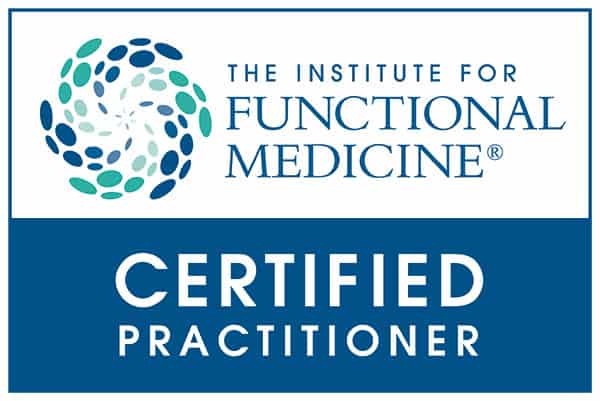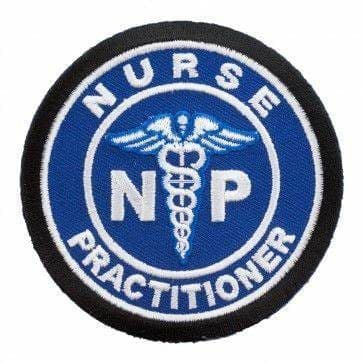
by Dr Alex Jimenez DC, APRN, FNP-BC, CFMP, IFMCP | UTEP (Local) RSS
Running in Nairobi, Kenya, Korir qualified to the 800m final with a time of 1:45.50 in the first heat
Staff Report June 27, 2017 206 Views
Emmanuel Korir, Michael Saruni and Mickael Hanany qualified to the IAAF (International Association of Athletics Federation) World Championships over the weekend.
Running in Nairobi, Kenya, Korir qualified to the 800m final with a time of 1:45.50 in the first heat, Saruni followed with a time of 1:46.10 in the second. In the men’s final, Korir (1:43.86) notched the crown and Saruni took third with a personal best of 1:44.61.
The All-Americans garnered a spot on the Kenya national team which heads to London, England to compete at the World Championships on August 5-8.
Also making his way to London will be former UTEP track and field star Mickael Hanany (France). Hanany took gold at the 2017 Euro Superleague with a leap over 2.26m (7-5) in the high jump. The seven time All-American will compete in his fourth IAAF World Championship.
The Nigerian trails will take place on July 7-8.
For more information on UTEP track and field, follow the Miners on Twitter (@UTEPTrack) and on Instagram (uteptrack).
Check Also
UTEP softball head coach Tobin Echo-Hawk announced the addition of pitcher Kira McKechnie on Wednesday. …

by Dr Alex Jimenez DC, APRN, FNP-BC, CFMP, IFMCP | UTEP (Local) RSS
UTEP softball head coach Tobin Echo-Hawk announced the addition of pitcher Kira McKechnie on Wednesday. McKechnie played her first two years at Fresno State and will have two years of eligibility with the Miners.
McKechnie will join fellow transfer pitcher Julia Wright, and UTEP sophomore hurlers Devyn Cretz and Allie Johnson for the 2018 season.
“We are excited to have Kira on our roster for the upcoming season,” Echo-Hawk said. “It is always nice to add some depth to your pitching staff.”
McKechnie, a native of Sacramento, Calif., made a relief appearance in the circle during the 2017 campaign against San Diego and recorded a strikeout. In 2016, McKechnie made a pair of appearances in the circle, throwing 1.1 innings, while allowing two hits and no runs.
McKechnie attended Christian Brothers High School and was a dual-sport athlete. She was a four-year letterwinner in both softball and basketball. McKechnie was voted softball team captain in 2015 and capped her senior year with multiple accolades, which includes Sacramento Bee’s 2015 All-Metro first team, Cal-Hi first team All-State, CAL All-Optimist All-Star team, MaxPreps first team All-State and Cal-Hi D3 Athlete of Honor.
She was named Female Athlete of the Year by Character Combine, Bee Preps Show and MaxPreps Christian Brothers, while earning the Credit Union Athlete of the Week in 2015.
During her senior season, McKechnie hit .462 with 40 RBI, 11 doubles, a triple and eight home runs. She added 18 runs and was walked nine times. In the circle, McKechnie (12-7) fashioned a 1.95 ERA and recorded 195 Ks 140 innings (23 starts/25 appearances).
McKechnie has competed for the California Breeze (2005-09), Capital City Comets (2009-12), Nor Cal Patriots (2012-14) and Central Cal Dirt Dogs (2014-15). She also attended the 2012 OnDeck Elite Futures Camp and 2013 Colorado Sparkler All-Star/All-American game.

by Dr Alex Jimenez DC, APRN, FNP-BC, CFMP, IFMCP | UTEP (Local) RSS
UTEP’s freshman Emmanuel Korir had a phenomenal year and was awarded the Conference USA Athlete of the Year, announced by the league office on Friday afternoon.
Opening up the 2016-17 season, Korir clocked a world record 600m at the New Mexico Cherry and Silver meet with at time of 1:14.97. It was his first time ever running on a 200m banked track. At the 2017 NCAA Indoor Championships, the freshman captured his first title in the 800m running a time of 1:47.48.
During the outdoor season the Kenyan native ran a school record time of 44.67 in the 400m at the UTEP Invitational. Seven days later Korir clocked 1:43.73 in the 800m at the Brutus Hamilton Challenge. He is just on of three athletes in the world to run sub-1:44 and sub-44 in the 800m and 400m respectively.
At the C-USA Outdoor Championships Korir claimed the 400m title (44.53) and set the meet record at the NCAA West Region Preliminaries in the 800m with a time of 1:45.88. The mid-distance runner won his second NCAA title in the 800m (1:45.03) at the historic Hayward Field in Eugene, Ore.
Korir was named the USTFCCCA (U.S. Track and Field and Cross Country Coaches Association) Athlete of the Week twice during the indoor season, garnered four C-USA Athlete of the Week awards and made The Bowerman Watch List three times during the season.
He joins a list of Miners who have been named C-USA Athlete of the Year:
Anthony Rotich (2012-13, 2013-14, 2014-15/ Track and Cross Country)
Camilla Carrera (2011-12/Softball)
Blessing Okagbare (2009-10/Track and Field)
For more information on UTEP track and field, follow the Miners on Twitter (@UTEPTrack) and on Instagram (uteptrack).

by Dr Alex Jimenez DC, APRN, FNP-BC, CFMP, IFMCP | UTEP (Local) RSS
UTEP led all Conference USA athletic programs in the final 2016-17 Division I Learfield Directors’ Cup standings, released this week.
The Learfield Directors’ Cup measures performance in NCAA Championship competition. The Miners scored a total of 242.5 points for a no. 83 national finish. The second-highest rated program in C-USA was Middle Tennessee with 217.5 points (91st), while Rice scored 142.5 points to rank 121st.
A total of 293 Division I athletic programs were ranked.
The Miners scored their points from men’s indoor track & field (50 points), men’s outdoor track & field (50 points), women’s outdoor track & field (50 points), men’s cross country (45 points), women’s indoor track & field (25 points) and men’s golf (22.5 points).
The UTEP men’s track & field team finished tied for 22nd at the NCAA Indoor Meet and tied for 23rd at NCAA Outdoors. Women’s track & field tied for 47th at NCAA Indoors and tied for 21st at NCAA Outdoors. Men’s cross country took 29th place at NCAAs. Men’s golf reached NCAA Regionals as a team for the first time since 2004.
The Learfield Directors’ Cup was developed as a joint effort between the National Association of Collegiate Directors of Athletics (NACDA) and USA Today. Points are awarded based on each institution’s finish in up to 20 sports in Division I — 10 men’s and 10 women’s.

by Dr Alex Jimenez DC, APRN, FNP-BC, CFMP, IFMCP | UTEP (Local) RSS
The Miners Hockey Club has announced they will open the 2017-18 season on the road against Texas A&M on September 29, 2017 at the Spirit Ice Arena. This matchup kicks off conference play for the new season.
The Miners and Aggies opened up their season last year in College Station. The first game saw the two teams trade goals back and forth and ended up going into overtime. Neither team scored in OT, however the Miners were able to win the game 7-6 in a shootout.
The following night, the Miners and Aggies were back at it. Again both teams didn’t have issues scoring early. However, the Aggies outscored the Miners to win 5-3.
Opening up the second half of the season, the Miners and Aggies faced off in El Paso. The first game once again saw the Miners come out strong. They took the first game 6-3. However, they couldn’t get the home sweep against the Aggies. The Aggies would win 2-1.
“We are starting our conference play against one of the strongest teams. It’s no secret A&M has had a strong club for several years. Although we have only played them a handful of times, the games are always exciting and something our team looks forward too.” commented Coach Herman.
Last season, the Miners finished 1st in the South Division and the Aggies were a close 2nd. During the TCHC tournament, the teams were in opposite brackets for a potential matchup for the championship. However, the Aggies were upset by UT in overtime the opening game.
The Miners went on to win the TCHC Championship by defeating the DBU Patriots by a score of 6-0.
Both teams will look to build on their success from last season as the TCHC enters it’s second year.
Author: UTEP Miner Hockey

by Dr Alex Jimenez DC, APRN, FNP-BC, CFMP, IFMCP | Diets, Fitness, Physical Rehabilitation
It’s high season for grilling and backyard barbecues, with July 4 celebrations planned across the country. But experts say it’s important to be aware that the popular summer pastime is riddled with minefields when it comes to health and food safety.
“Grilling is generally a healthy way to cook food if you take certain precautions,” says registered dietitian Joan Salge Blake, an associate professor at Boston University’s Sargent College of Health and Rehabilitation Sciences.
Here are some tips from Blake and other experts:
Avoid food contamination: Mixing cooked food with juices from raw meat is a big no-no. “When it comes to food safety, we have to be careful about cross-contamination,” Blake tells Newsmax Health. “People bring the raw meat out on a platter, grill it and then put it back on the same platter without washing it. That’s how you can transfer pathogens that can cause a range of food-borne illnesses.”
Use a thermometer: You can’t trust your eyes to tell you whether or not meat is cooked enough. “One in four hamburgers turn brown prematurely, before they are at a safe internal temperature to be consumed,” says Blake. “Rather than trust our vision to determine if food is safe to eat, use a meat thermometer and make sure the internal heat is at least 165 degrees Fahrenheit.”
Keep the flame down: Cooking with high heat from an open fire creates carcinogenic compounds in beef, pork, poultry, and seafood. So while that flame-licked steak or salmon may have a great grilled flavor, it also contains heterocyclic amines (HCAs) from the charred part and polycyclic aromatic hydrocarbons (PAHs) from the fire’s smoke. Lab studies suggest that they can cause mutations in DNA that may boost the risk of cancer.
Pre-cook meat: One way to reduce HCAs and PAHs is to partially cook meat — by boiling or microwave — before grilling it. That will reduce the time it is exposed to the high heat and smoke that creates these dangerous compounds.
Flip frequently: “You want to keep turning the meat to keep it from getting charred, because that’s where the [biggest] problem is,” says Blake. “If it does get charred, don’t eat that part.” Aim to flip grilled foods at least once a minute.
Foil flare-ups: One thing that can make the flame flare up is when fat from the meat drips down to the heating source. Blake suggests putting some foil down on the grill, which will keep the melted fat from hitting the flame.
Use marinade: Studies show that marinades can significantly reduce the HCAs and PAHs in grilled meat. Researchers believe it works by helping to keep the meat moist, and it can also improve flavor. One study showed that using the herb rosemary lowered HCA levels by 90 percent. Other things that can cut down on the bad compounds are garlic, onion and honey.
Watch your sauce: Blake warns not to use the leftover marinade for a sauce on the grilled meat, unless you cook it as well, because it could contain bacteria and other pathogens from the raw meat.
Grill veggies: “One of the best things you can do for overall health is to grill more vegetables than protein sources,” says Blake. “They don’t produce HCAs and PAHs, and they have a wide range of health benefits.”
Be fire smart: The most obvious health threat of grilling is the fire itself. According to the National Fire Prevention Association, about 9,000 blazes are sparked by grills every year, causing an average of 10 deaths, 160 injuries and more than $100 million in property damage.
Using common sense can reduce fire risks. The NFPA cites the main fire causes as placing the grill too close to anything that can burn, not cleaning it regularly, and leaving it unattended. If you’re using a propane grill, don’t turn the gas on for too long before lighting it. You should also check lines and connections for leaks.

by Dr Alex Jimenez DC, APRN, FNP-BC, CFMP, IFMCP | Anti Aging
Popular hormone-based drugs for treating an enlarged prostate could increase men’s risk of type 2 diabetes, heart disease or stroke, a new study suggests.
A group of German men taking the drug Avodart (dutasteride) for three years wound up with higher blood sugar and cholesterol levels than men taking another class of prostate medication that does not affect male hormones, the researchers reported.
“Our small study suggests there are really adverse effects on metabolic function from these drugs that has not been reported previously,” said lead researcher Abdulmaged Traish. He is a professor of urology with the Boston University School of Medicine.
But Dr. Ashutosh Tewari, chair of urology for the Icahn School of Medicine at Mount Sinai in New York City, said the new findings run counter to prior clinical trials of the drug, and do not warrant any change in use at this time.
Still, Traish believes urologists should talk about these new results with patients before prescribing either Avodart or another hormone-based prostate drug called Proscar (finasteride). Both are in the class of drugs known as 5-alpha-reductase inhibitors.
“They should have a clear, open and honest discussion with their patients,” Traish said. “This drug might cause some of these problems.”
However, according to Tewari, “This is an interesting finding which is a little different than the large ‘controlled’ studies. It needs to be studied in a larger pool of patients in a prospective manner.”
The association seen in the study doesn’t prove a cause-and-effect relationship.
The prostate is a walnut-sized gland surrounding the urethra where it connects to the bladder. The prostate produces fluid that goes into semen, and is essential for male fertility. But as men age, their prostates tend to enlarge, pinching the urethra and making urination more difficult.
Avodart reduces production of dihydrotestosterone (DHT), a hormone linked to enlargement of the prostate gland. Treatment with Avodart can cause a man’s prostate to shrink by roughly 18 percent to 20 percent, Traish noted.
“The men urinate a little bit better,” Traish said. “They don’t have to stand an hour and a half in the bathroom at the airport.”
However, DHT also plays an important role in the function of other organs, particularly the liver, Traish said. He and his colleagues are concerned that reducing DHT could have other unknown health effects.
To examine the issue, Traish’s team reviewed records of 460 men treated at a single urologist’s office in Germany for enlarged prostate.
Half of the men had been prescribed Avodart to treat their problem, and the other half had been prescribed Flomax (tamsulosin). Flomax, in the class of drugs known as alpha-blockers, does not affect hormones, but works by causing the smooth muscle tissue of the prostate to relax, Traish said.
The researchers tracked all of the men for 36 to 42 months, performing blood tests and assessing prostate size and function.
Avodart was linked to an ongoing rise in blood sugar levels among men who received the drug, while men taking Flomax did not experience any such increase, the study authors said.
Further, long-term Avodart treatment was linked to increased “bad” LDL cholesterol levels in men, the investigators found. Men on Flomax experienced a smaller but yet significant increase in their LDL cholesterol levels, but also had an increase in their “good” HDL cholesterol levels, the findings showed.
Based on his findings, Traish said he would lean toward prescribing Flomax first rather than a hormone-based prostate drug.
“I would rather have my patient try something safer, and if it works for him, keep him on that,” Traish said.
Tewari noted that the clinical trials that found Avodart effective in treating enlarged prostate did not show any of these other metabolic problems.
Those clinical trials relied on men being randomly assigned Avodart, Tewari said. The men in this new study were not assigned medication randomly, but were allowed to choose their treatment following discussion with a doctor.
The new study also did not compare men taking Avodart to a control group taking a placebo, and relied on past data rather than an entirely new experiment, Tewari continued.
“This is interesting, yet needs to be verified in a controlled setting with a larger pool of patients,” Tewari explained. “At this time, I’m not too impressed with any clinical significance of this study.”
The study was published online recently in the journal Hormone Molecular Biology and Clinical Investigation.












